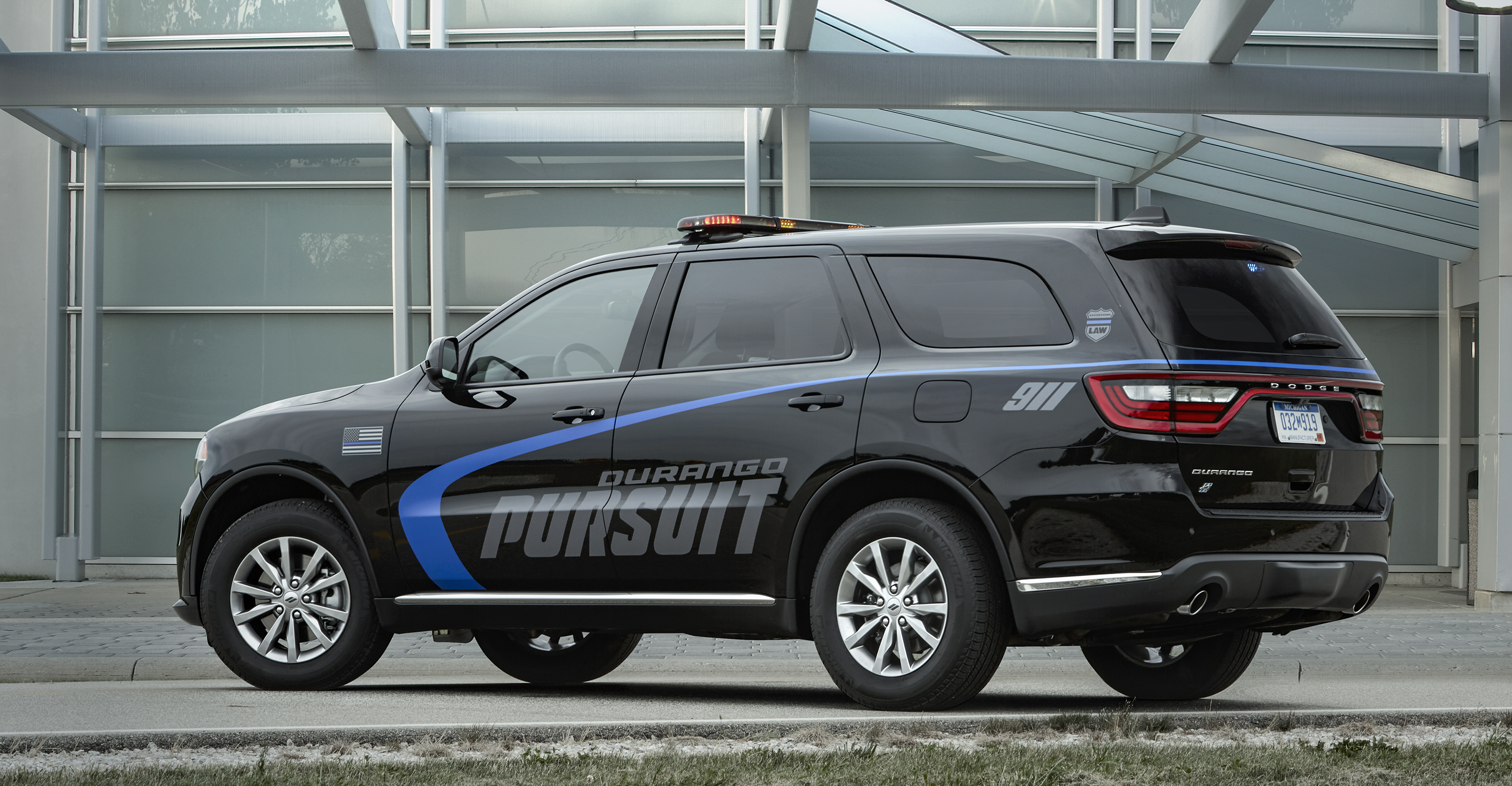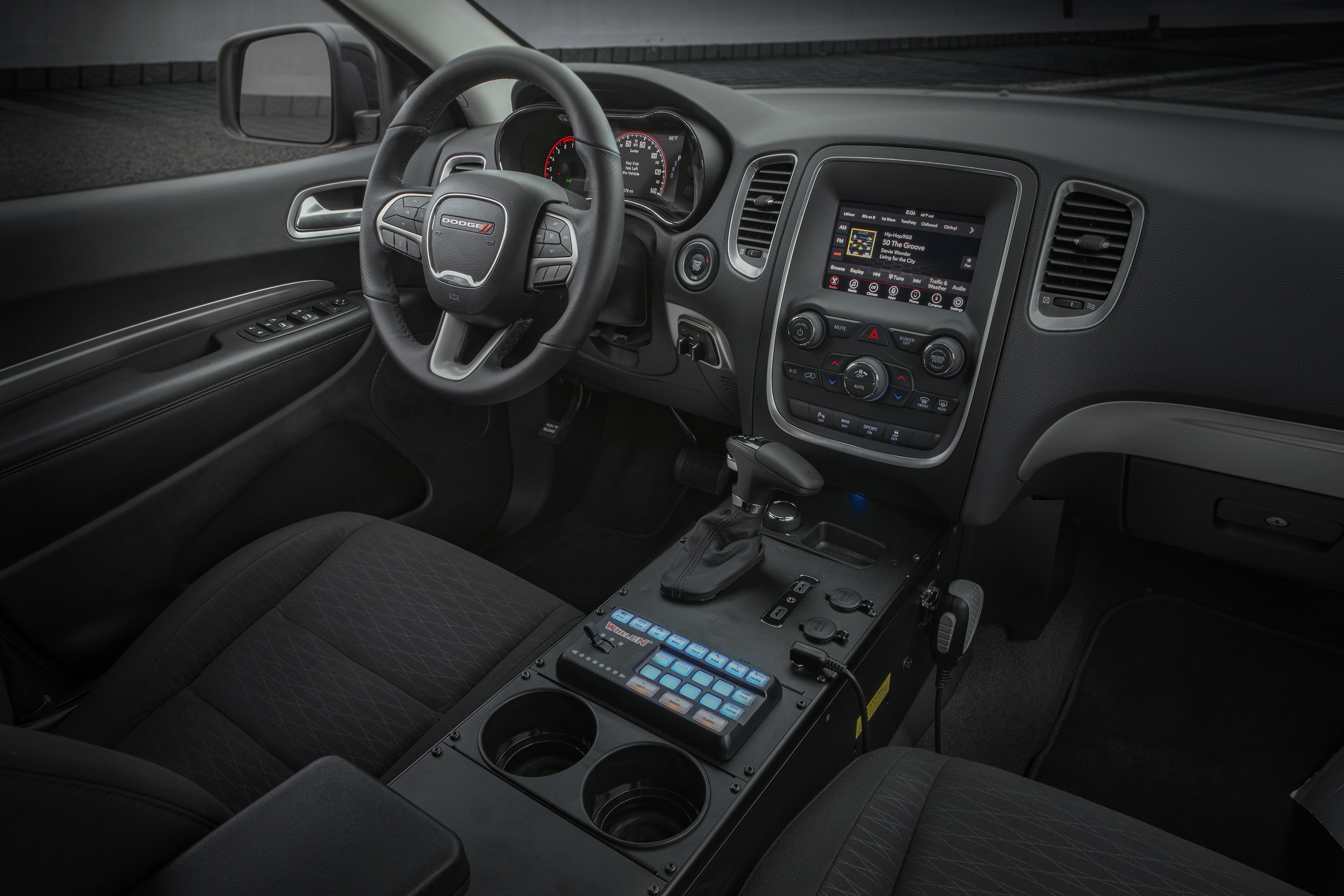The 2019 Dodge Durango Pursuit Is Ready For Duty!
B.O.L.O. For The HEMI-Powered, AWD Durango Law Enforcement Vehicle...

Dodge has expanded its police vehicle lineup, entering the SUV segment, with a Pursuit (or Enforcer if you are in Canada) version of the Dodge Durango. The 2019 Dodge Durango Pursuit – America’s high-performance police SUV – is equipped with world-class safety and security features, segment-first technology and tactical equipment. The Uconnect 7.0-inch display integrates law enforcement systems and innovative technology. The 2019 Durango Pursuit embodies the three qualities that every Dodge law enforcement vehicle is designed to maximize: safety, performance and efficiency.
Dodge recognizes that the heroic men and women who protect us must be equipped with the best-performing pursuit-rated vehicle. In addition to the legendary 5.7L V-8 HEMI® engine that delivers a best-in-class 360 horsepower, Durango Pursuit offers the segment’s most advanced all-wheel-drive (AWD) system for maximum tactical performance, all-weather traction and fuel-efficiency. With input from law enforcement officials, the 2019 Durango Pursuit continues to add improvements to meet the high expectations and performance needs of the heroes who protect us.

The 2019 Dodge Durango Pursuit adds a new front fascia with integrated brake-cooling air ducts for improved brake performance and durability. It is the same fascia used on the 2019 Durango GT, Durango R/T and Durango SRT. For added control and stability, Durango Pursuit features a new performance-tuned, load-leveling suspension to bolser it’s pursuit-level driving capabilities.
All Durango Pursuit models feature all-wheel-drive (AWD) and offer the standard 3.6-liter Pentastar V-6 engine rated at 293 horsepower and 260 lb.-ft. of torque or the available 5.7-liter V-8 HEMI model that’s rated at a best-in-class 360 horsepower and 390 lb.-ft. of torque. Pursuit-rated hardware includes performance-tuned suspension, load-leveling NIVOMAT shocks, 13.8-inch front and 13.0-inch rear pursuit-rated brake package, front- and rear-stabilizer bars, 18-inch tires on aluminum wheels and electronic stability control (ESC).
Highlights:
- Dodge Durango Pursuit V-8 includes the segment’s most technologically advanced AWD system with a segment-exclusive active transfer case to improve real-world fuel economy while also enhancing the vehicle’s traction and handling
- Up to an EPA-estimated 25 miles per gallon (mpg) or 9.6 L/100 km highway with the 3.6-liter Pentastar V-6 and 22 miles per gallon (mpg) or 10.9 L/100 km highway with the 5.7-liter HEMI V-8 engine
- 2019 Durango Pursuit is available with a spot lamp wiring prep package, red/white auxiliary dome lamp and, when equipped with a HEMI V-8 engine, 800 cold cranking amp (CCA) battery
- Best-in-class 7,200-lbs. towing capability and available trailer tow
- Under-vehicle mount for spare tire, maximizing interior cargo space and accessibility
- 8.1 inches of ground clearance for off-road capability
- Electronic eight-speed transmission for improved responsiveness and fuel economy
- Class-exclusive, K-9 friendly tri-zone interior temperature control
- Segment’s longest wheelbase (120 inches) for added stability and handling
- ParkView rear backup camera with ParkSense
- Eight-way power adjusting driver seat controls
- Certified speedometer
- 220-amp alternator
- Heavy duty oil cooler and water pump

Model Lineup:
The 2019 Dodge Durango Pursuit lineup consists of two models:
- Durango Pursuit V-6 AWD
- Durango Pursuit V-8 AWD

Exterior Colors:
The 2019 Dodge Durango Pursuit is offered in nine different colors for agencies to choose. Those colors include, Billet Clear Coat, Blue Shade Pearl, DB Black Crystal, Destroyer Gray, Granite Crystal Metallic, In Violet Metallic, Octane Red Pearl, Vice White Tri-Coat Pearl and White Knuckle.

Interior Colors:
The 2019 Dodge Durango Pursuit only comes with one interior choice. An black cloth interior is standard across the entire lineup.
The 2019 Dodge Durango Pursuit (and Enforcer) models are currently available for order. For more information, visit https://www.fcausfleet.com/ or http://www.fcacanada.ca/fleet/en





